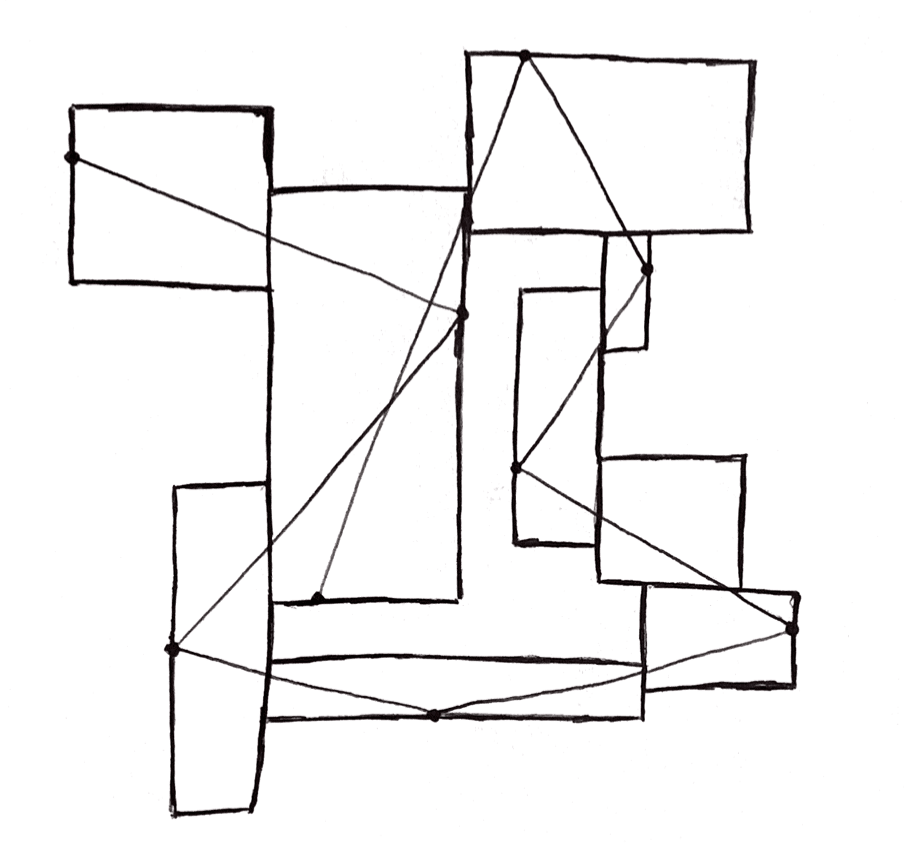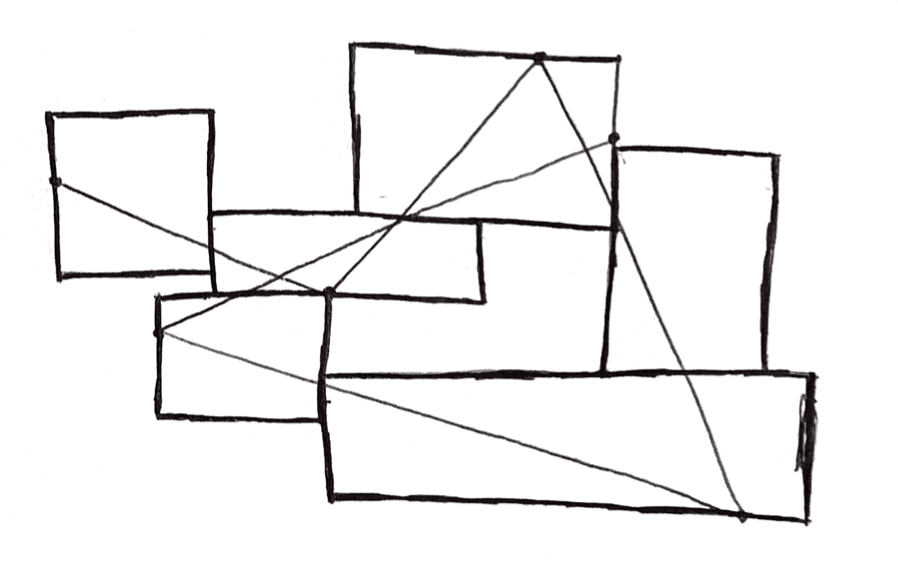← Back to Sketchbook
Rectangles, Jul 05 2020
This idea/sketch was originally done as a warm-up exercise for a creative coding class taught by Matt DesLauriers.
The exercise was inspired by the work of the artist Sol LeWitt. LeWitt was known for producing art in the form of instructions that others would themselves follow to create the final piece of art. This instructions were often simple and left room for interpretation and the final products reflects a combination of LeWitt's artistic vision and the individuals own style.
To follow in this style, we were tasked to:
"With pen and pencil, come up with a short set of instructions that produces some graphic output. Keep it simple and minimal, and try to stick with basic shapes and forms like lines, circles, points, squares, etc."
Stumbled upon this nice Sol LeWitt exercise written in 1972, published in Avalanche Magazine, encouraging the reader to render a "Page Drawing" directly onto the issue. pic.twitter.com/Thx0Ni6NeP
— Matt DesLauriers (@mattdesl) February 13, 2020
This idea/sketch was originally done as a warm-up exercise for a creative coding class taught by Matt DesLauriers.
The exercise was inspired by the work of the artist Sol LeWitt. LeWitt was known for producing art in the form of instructions that others would themselves follow to create the final piece of art. This instructions were often simple and left room for interpretation and the final products reflects a combination of LeWitt's artistic vision and the individuals own style.
To follow in this style, we were tasked to:
"With pen and pencil, come up with a short set of instructions that produces some graphic output. Keep it simple and minimal, and try to stick with basic shapes and forms like lines, circles, points, squares, etc."
Stumbled upon this nice Sol LeWitt exercise written in 1972, published in Avalanche Magazine, encouraging the reader to render a "Page Drawing" directly onto the issue. pic.twitter.com/Thx0Ni6NeP
— Matt DesLauriers (@mattdesl) February 13, 2020
I wrote down:
Draw a series of rectangles that are connected via their sides but do not touch on their corners. Then draw a series of lines starting from one side of a rectangle and have it pass through to another rectangle’s side.
With our instructions defined, we were then told to sketch something that followed our rules. This produced the below sketches.
Beyond simply liking how these sketches came out, I found the Sol LeWitt style of art to be a fascinating experiment and jumping off point, especially for talking about generative art. In my previous sketches, I generally had a vision for what I wanted it to look like and I wrote the code/built the system that would create that. Using this alternate approach, I was creating the rules of the system and then letting the computer (or human) do whatever it felt appropriate.
This exercise reminded me of the classic exercise of explaining how to make a peanut butter and jelly. The exercise, which is used stress the importance of providing explicit and clear instructions, helps illustrate how far we can deviate from a plan depending on how descriptive or explicit we are in our instructions. Most of the time, this kind of deviation is a huge pain to fix, but sometimes, we can be pleasantly surprised.
LeWitt’s work and this general approach to generative art is deeply connected to the idea of “following the rules” to create personalized and often surprising results, which I find fascinating. I also think it’s a great source of inspiration for future generative sketches, so keep an eye out for more results following this exercise.


